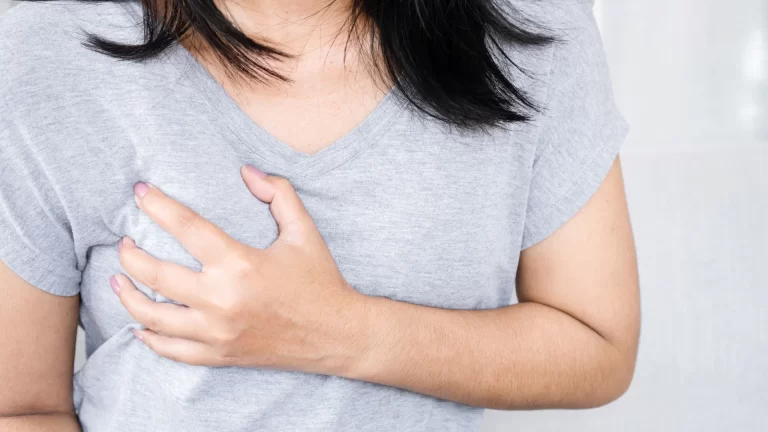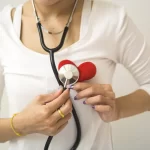Key Points
- Breast tenderness during ovulation is a common, hormone-driven symptom affecting many people during their reproductive years.
- It differs from PMS-related or pregnancy-related breast pain in timing and sensation.
- Hormonal shifts—especially rising estrogen and progesterone—play a major role.
- Practical relief strategies include lifestyle adjustments, over-the-counter solutions, and understanding when to seek medical input.
The Mid-Cycle Mystery of Sore Breasts
It often starts with a question whispered in the bathroom mirror or typed into a search bar: Why are my breasts sore—and it’s not even my period?
For millions of people with menstrual cycles, breast tenderness during ovulation comes as a surprise. It can feel like a dull ache, heaviness, or heightened sensitivity in one or both breasts—just as you’re far from your period and not pregnant. The answer, as it turns out, lies in the intricate dance of hormones happening inside your body each month.
Why Understanding Breast Tenderness Matters
Breast pain—especially when it shows up suddenly or unpredictably—can cause real anxiety. Is it a sign of pregnancy? Something serious? Or just part of the cycle?
Understanding what’s behind mid-cycle breast tenderness empowers you to better track your cycle, manage discomfort, and feel more in control of your health. It also helps separate normal, hormone-driven changes from symptoms that might need medical attention (Mayo Clinic, 2024).
Recognizing the Signs and Patterns
For many, ovulation-related breast tenderness is part of a broader pattern known as cyclical mastalgia—breast discomfort that follows the menstrual cycle. According to the American College of Obstetricians and Gynecologists (ACOG), this symptom affects a majority of menstruating individuals at some point in their lives.
Typical characteristics include:
- Timing: Occurs around days 12–16 of a typical 28-day cycle, during or just after ovulation.
- Sensation: Aching, swelling, or a feeling of fullness; sometimes only in the outer part of the breast.
- Duration: Usually lasts a few days and resolves on its own (ACOG, 2023).
This discomfort is part of the body’s response to monthly hormonal changes—not a sign that something is wrong.
The Hormonal Chain Reaction Behind the Discomfort
During the first half of your cycle—the follicular phase—estrogen levels rise steadily. Estrogen stimulates the breast ducts, causing the tissue to become more sensitive. As ovulation nears, a surge of luteinizing hormone (LH) triggers the release of an egg. Shortly after, progesterone rises, causing the milk glands in the breasts to swell slightly.
These hormonal shifts can lead to:
- Fluid retention, which increases breast fullness
- Increased blood flow, adding to tissue sensitivity
- Stretching of connective tissue, which causes that familiar soreness
A 2016 review in Breast Care found that up to 70% of individuals with cycles report some form of cyclical breast pain, with symptoms often peaking either during ovulation or just before menstruation begins (Haagensen et al., 2016).
Distinguishing Ovulation Pain from Other Causes
Not all breast pain is hormonal, and not all hormonal breast pain occurs during ovulation. Here’s how different causes compare:
| Type of Tenderness | Timing | Common Causes |
|---|---|---|
| Ovulation-Related | Mid-cycle (days 12–16) | Estrogen & progesterone surges |
| PMS-Related | Late luteal phase (just before period) | Progesterone dominance |
| Pregnancy-Related | After a missed period | Early hCG hormone increase |
| Fibrocystic Changes | Varies, often monthly | Dense or cystic breast tissue |
| Non-Cyclical Pain | Unrelated to cycle | Injury, infection, or unknown causes |
According to the Cleveland Clinic, persistent or localized pain, especially if accompanied by other symptoms like lumps or discharge, may require further evaluation (Cleveland Clinic, 2024).
Effective Strategies for Relief
While mid-cycle breast tenderness is often harmless, it can still disrupt comfort and confidence. The following strategies may help:
Lifestyle Tweaks
- Wear a supportive bra during the day and even at night for extra comfort.
- Limit caffeine and salty foods, which may reduce fluid retention in some users (WebMD, 2023).
- Hydrate regularly to support lymphatic drainage.
- Stay active, as exercise can help regulate hormone levels.
Nutritional & Natural Options
- Vitamin E and evening primrose oil have been suggested as natural options, though research shows mixed results (National Center for Complementary and Integrative Health, 2023).
- Magnesium supplements may help with fluid retention and bloating.
Over-the-Counter Relief
- NSAIDs such as ibuprofen or naproxen can reduce inflammation and ease discomfort.
- Warm compresses or gentle massage may also provide relief.
If you’re on hormonal birth control or fertility treatments, your breast sensitivity may change. These shifts are usually due to the way synthetic hormones influence estrogen and progesterone levels (Pluchino et al., 2015).
When Breast Pain Deserves a Closer Look
Most ovulation-related breast pain resolves on its own, but it’s important to know when to follow up with a health professional. Red flags include:
- A new or growing lump
- Pain that doesn’t follow your cycle
- Skin dimpling, nipple discharge, or changes in appearance
- Pain that interferes with daily life despite self-care strategies
As ACOG advises, always report changes that feel unusual or concerning, even if they seem minor at first.
Empowering Yourself Through Cycle Awareness
Understanding the rhythms of your menstrual cycle—including when and why breast tenderness occurs—can turn confusion into clarity. Tools like cycle-tracking apps, journals, or wearable devices help identify patterns and pinpoint when symptoms like breast tenderness are likely to occur.
This kind of self-awareness supports not just comfort, but long-term well-being. It’s a reminder that your body is communicating with you—and you have the tools to listen.
Next Step: If you’re unsure whether your breast tenderness is related to ovulation, consider tracking your symptoms for a few cycles. If patterns persist or concerns arise, talk to a trusted health professional who can help you sort through the hormonal haze with clarity and care.
The article does not in any way constitute as medical advice. Please seek consultation with a licensed medical professional before starting any treatment. This website may receive commissions from the links or products mentioned in this article.
Subscribe for Free for more insightful health articles tailored to your needs.
Sources
- American College of Obstetricians and Gynecologists (ACOG). Breast Pain (Mastalgia). https://www.acog.org
- Mayo Clinic. Breast Pain. https://www.mayoclinic.org/diseases-conditions/breast-pain
- Cleveland Clinic. Mastalgia: Breast Pain. https://my.clevelandclinic.org/health/diseases/15765-breast-pain-mastalgia
- Haagensen, C. D. et al. (2016). Cyclical Mastalgia: Clinical Features and Hormonal Correlations. Breast Care, 11(5), 345–350. https://www.ncbi.nlm.nih.gov/pmc/articles/PMC5020994/
- WebMD. Understanding Breast Pain. https://www.webmd.com/women/guide/breast-pain-causes-and-treatment
- National Center for Complementary and Integrative Health. Evening Primrose Oil: What You Need to Know. https://www.nccih.nih.gov
- Pluchino, N. et al. (2015). Hormonal contraception and breast tenderness: a review. Climacteric, 18(3), 275–282. https://pubmed.ncbi.nlm.nih.gov/25629501/
Last Updated on July 31, 2025



